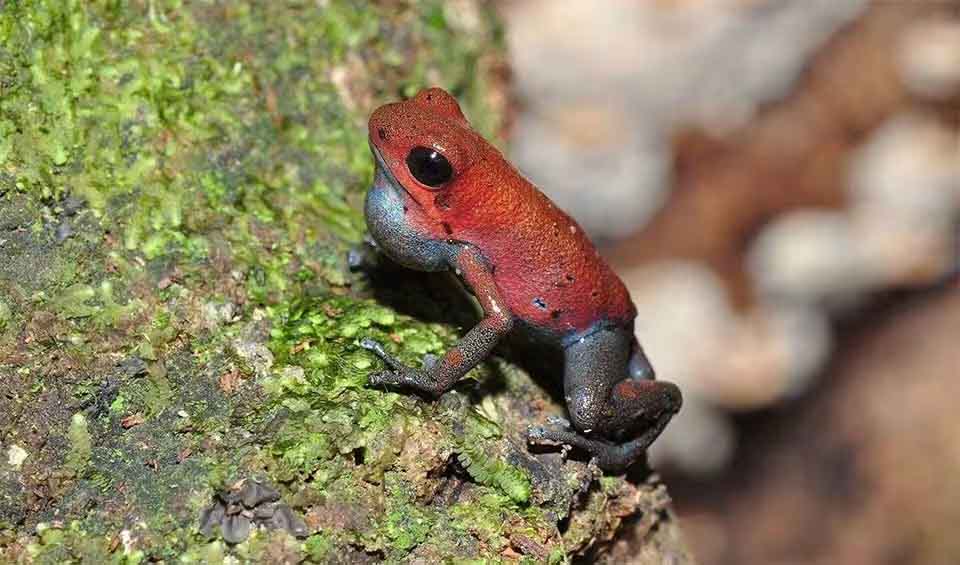Unlike some other species, the strawberry poison dart frog exhibits bilateral symmetry in its vibrant skin patterns, with colors ranging from strawberry red to blue, yellow to white, and green to black. This remarkable diversity in coloration makes it one of the most visually striking species within the poison dart frog family.
Despite its small size, the strawberry poison dart frog can remarkably adapt to various habitats. It is commonly found in cocoa and banana plantations, as well as in the dense rainforest undergrowth. While it is adept at climbing trees and vines, this species typically spends most of its time on the rainforest floor, where it seeks refuge amidst the leaf litter.
The strawberry poison dart frog obtains its toxic skin secretions from alkaline toxins in its diet, primarily from consuming smaller insects such as ants. These toxins serve as a potent defense mechanism against potential predators, deterring them from preying upon the frog.
However, despite its adaptive abilities and toxic defenses, the strawberry poison dart frog faces threats from habitat loss and fragmentation due to human activities such as deforestation and agricultural expansion. Encroachment into its natural habitat, particularly in regions where cocoa and banana plantations are prevalent, poses a significant risk to its survival.
Distribution
 Costa Rica
Costa Rica Nicaragua
Nicaragua Panama
PanamaAnything we've missed?
Help us improve this page by suggesting edits. Glory never dies!
Suggest an editGet to know me
Terrestrial / Aquatic
Altricial / Precocial
Polygamous / Monogamous
Dimorphic (size) / Monomorphic
Active: Diurnal / Nocturnal
Social behavior: Solitary / Pack / Herd
Diet: Carnivore / Herbivore / Omnivore / Piscivorous / Insectivore
Migratory: Yes / No
Domesticated: Yes / No
Dangerous: Yes / No






